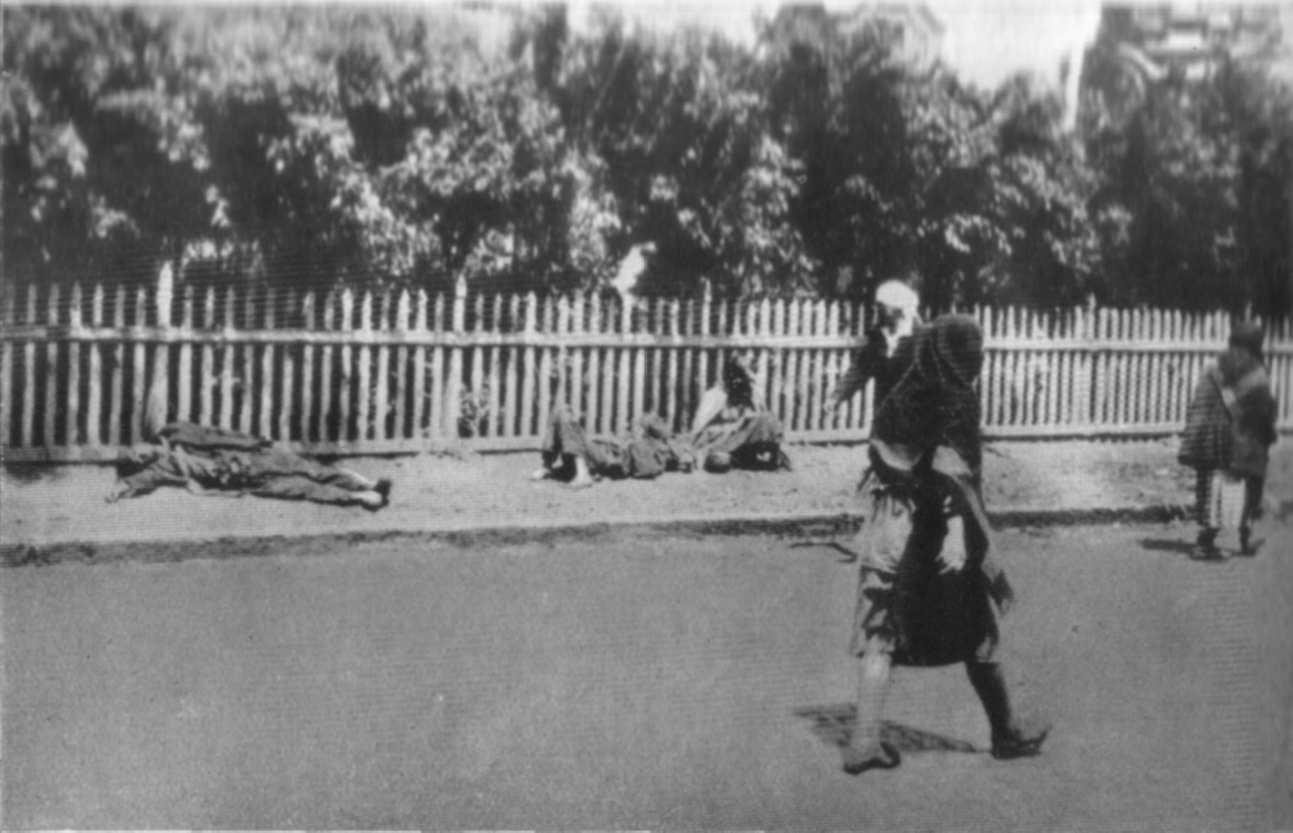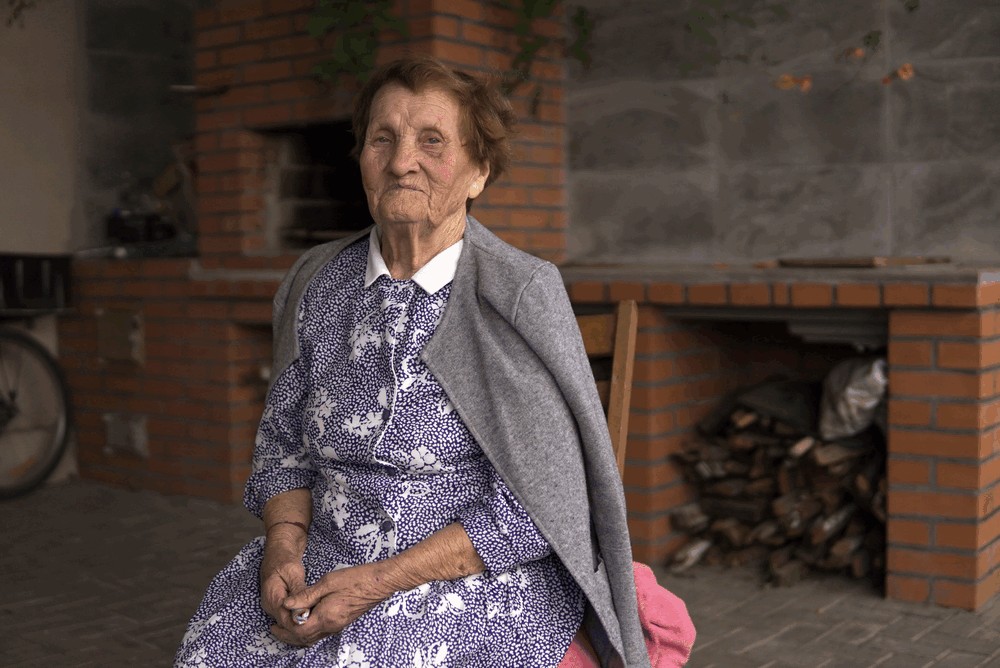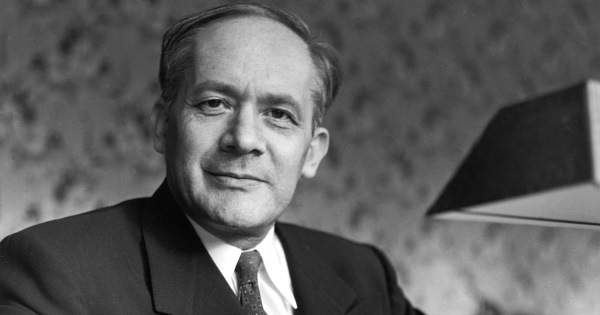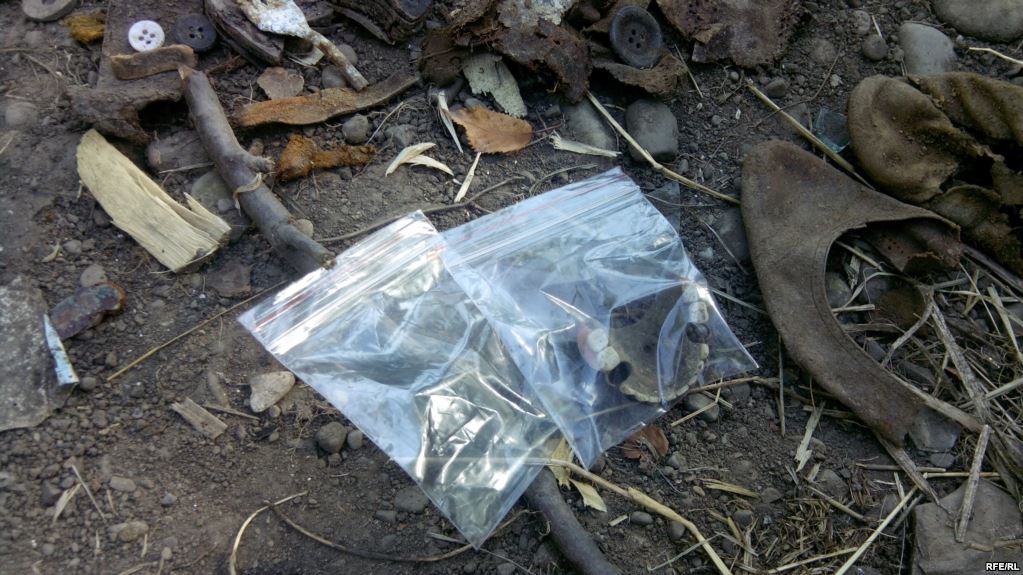On 5 July 1933, a desperate appeal for food aid was sent to Stalin from within the Bashkir ASSR. The Bashkirs are a small Turkic ethnic group that mostly reside in a region just to the north and west of Kazakhstan, and in 1933 Stalin had targeted them for the Kulaks in their midst. In February of that year 1000 Bashkir families had been deported to Stalin’s gulags for that reason. In February 1933, 1000 Bashkir families had been deported to Stalin’s gulags. What makes the appeal notable is that we know Stalin had read it. To the left of the document he penciled the cryptic word “за” along with a signature.
- For a brief overview of the Holodomor, please see our infographic: Holodomor: Stalin's genocidal famine of 1932-1933
In Russian, the word “за” could either mean “for” or “after” depending on the context. If Stalin ever had an intent to give the Bashkir ASSR food aid he would only have done it after a certain goal had been reached, namely further control of the region to his wishes which in practice meant further russification, something that was reflected in the distorted census of 1939. Both the Holodomor and the Goloshchekin Genocide, which used highly similar pretexts and modus operandi, had provided a model, something that other parts of the USSR were inspired by as a means of getting rid of supposed enemies of the state or keeping them under control. We know this because on 16 February 1933 a telegram was sent to Stalin from Stalingrad asking if all repressive measures taken against the Ukrainians to prevent their migration “be extended to our region?”
During the 1930s, knowledge of what Stalin was actually doing rarely made much headway in the West. Too many were instead convinced by the pro-soviet lies peddled by the likes of playwright George Bernard Shaw, French Prime Minister Édouard Herriot and New York times correspondent Walter Duranty, whose reporting on the USSR had won him a Pulitzer prize.
Duranty’s outright public dishonesty can be gauged by contrasting it to his private remarks, such as those that were recorded by a report dated 30 September 1933 that came from the British charge d'affaires in Moscow.
“According to Mr. Duranty, the population of the North Caucasus and the Lower Volga has decreased in the past year by 3 million, and the population of Ukraine by 4-5 million. The Ukraine had been bled white … Mr. Duranty thinks it quite possible that as many as 10 million people may have died directly or indirectly from lack of food in the Soviet Union during the past year.”
Duranty’s figure of 10 million is interesting because one can easily say that it represents a minimum estimate for the number of deaths in 1932-33 that have been confirmed by modern scholars. As I have mentioned before, 4-5 million at least did indeed die within the Ukrainian SSR and when you add in the number of Ukrainians who died outside of it (such as in the Kuban (North Caucasus) which was a majority Ukrainian area and where 1-2 million died), you are looking at a Holodomor total of 5-7 million. Add to that the figures from the Goloshchekin Genocide where at least 1.5 million Kazakhs died and you’re looking at 6.5-8.5 million deaths within a single year. Add in the victims of the famine in the Volga (of which the Volga Germans seemed to have been a main target) and other areas such as Crimea or the Bashkir ASSR it quickly adds up.
Some Russians too were also caught up in the starvation during 1932-33 and they too must be counted among Stalin’s victims but Russians did not starve nowhere near in the same proportions as the Ukrainians, Kazakhs or a number of the ethnic minorities that inhabited Southern Russia. A major aim of the Holodomor and related famines was to change ethnographic compositions to suit Stalin’s whims, in effect Russification - something that the archival evidence explicitly admits. For Ukraine, the consequences of Stalin’s decision making is plaguing its eastern parts today.
The #Holodomor on Twitter. https://t.co/9lejZm3KLR via @Storify
— James (@historyboy77) July 29, 2015
All the above is well known to those of us who specialise in the history of Stalin’s crimes even though knowledge of those crimes remains relatively unknown in the West by means of a successful Soviet disinformation campaign. Pointing out these crimes and exposing Soviet propaganda for what it is should be what is called in the US a “no brainer,” yet Russia today continues to completely refuse to acknowledge any wrongdoing committed in its name. Pointing out the Holodomor or other crimes is often depicted as simply being an attack on the Russian character, or rather the Kremlin itself from which these crimes actually originated from.
For Putin, a man who lives on the authoritarian legacy of the USSR, who began his career as a KGB thug, and who has incorporated the supposed glories of the USSR into his brand of Russian nationalism, the Holodomor and other Soviet crimes persist as black stains on his ideology. Thus, he has an agenda to promote denial of them all. I’ve already published an article on one of Russia’s most prominent Holodomor deniers in which i covered much of the above and refuted some common denial tropes. This article is going to cover a few more denial tropes, such as those promoted in this Sputnik article which twitter has persistently alerted me to.
That article begins with a rambling conspiracy theory that the Holodomor was simply invented after WW2 by a conjunction of the CIA and the OUN/UPA specifically “Nazi collaborator” Mykola Lebed and this brings us to Myth 1.
Myth 1: “The Holodomor was entirely “invented” by the Far Right”
Mykola Lebed, of course, did not invent the Holodomor. Beyond the fact that this myth is not an answer to the archival evidence, some of which you can see above, it is not even true that only the Ukrainian Right in general tried to promote awareness of the Holodomor at the time. One such example is the Ukrainian Socialist Radical Party (URSP) which formed out of a merger between two other socialist parties in 1926. This party operated in Polish-controlled Western Ukraine and it represents an interesting case study of Socialism as it professed Anti-sovietism, believing that Stalin’s USSR was no different to the capitalist states when it came to matters of imperialism and colonialism and setting its slogan "All Land to the Peasants without Redemption" against what the Soviets were actually doing in the Ukrainian SSR.
During 1933, at the peak of the Holodomor, this party established a committee in order to stage protests about hunger in the USSR. But to little effect. It was inhibited by the Polish government which kept its side of the 1934 Polish-Soviet non-aggression pact (that Stalin would violate in 1939) by keeping its mouth shut.
Another well-known left-wing promoter of the Holodomor was George Orwell. That the image of the Holodomor made its way into Animal Farm was not a coincidence. Gareth Jones, one of the most prominent journalists who helped expose the Holodomor to the West, was affiliated to the British Liberal party.
Commemorating the Holodomor does not necessarily promote Nazism either. Ukraine’s Jews were also seriously devastated by the famine and their story is important. Those Neo-Nazis who deny the Holocaust and instead focus on an incoherent “Jewish conspiracy” with regards to Soviet rule are in effect double genocide deniers. They deny the USSR’s murderous antisemitism which means they also deny this aspect of the Holodomor.
Myth 2. All the photographic evidence is a lie
It has been alleged from Holodomor deniers that all the photographs depicting famine in Ukraine during 1932-33 are actually all implants from elsewhere, notably the famine of 1921-22. In 2009 RT published a Holodomor denial article with this as a theme. This myth has unfortunately been sustained due to the fact that international Holodomor exhibitions (and even this film) sometimes by accident do allow photos from elsewhere to slip through unchecked.
Far from this being some conspiracy, one must remember that Stalin didn’t like anyone to photograph something inconvenient such as a person starving. For that reason visual references are very rare but that is not to say they do not exist. The key is identifying the photographer if possible, and where the photo was taken. These photos of the Holodomor in Kharkiv taken by an Austrian engineer are sometimes considered to be the only authentic Holodomor photos, but lesser known are the photos around the Donetsk countryside taken by a Ukrainian by the name of Marko Zhelezniak or the photos of Mykola Bokan around Chernihiv.
Despite the claims of the deniers, supposed false photographic evidence does not refute the Holodomor as a whole. Genuine photos of the famine do exist and they are but one strand in the cumulative body of evidence.
Myth 3. The Holodomor was natural
Ignoring the documentary evidence, some Holodomor deniers look to purely climatic reasons as an explanation for a famine that they admit but deny it was genocide. Sometimes this comes attached with an added note that the famine of 1932-3 is just simply one of a long list of famines that have blighted the area or Eastern Europe in general. With each natural famine though one can easily find a culprit, either extreme prolonged weather as was the case for the “Tsar Famine” of 1894-5, or a bout of explosive volcanism somewhere around the world. One example would be perhaps the worst natural famine to have impacted Eastern Europe (including Ukraine) which happened between 1600-1603 - the culprit was the Huaynaputina volcano in Peru which in 1600 produced the most powerful volcanic eruption within South america’s recorded history. As there was no bout of volcanism of similar or greater magnitude in the early 1930s, we cannot pin the Holodomor on that. So what then? The aforementioned Sputnik article mentions that Ukraine was struck by periods of drought around about the same time, except drought cannot stand alone as a single explanation to the loss of 5-7 million Ukrainians. No other of the many droughts that have peppered Ukraine’s past comes close to such a death toll nor taken a similar proportion of a total population at any one given time.
Manmade factors have to account as the most major part of the explanation for such a death toll. On August 22 1932 Stalin sent a telegram to his associate in the Kuban, Boris Sheboldaev, telling him that he could not support a requested reduction of grain quotas for the Kuban. Instead Stalin reminded him that despite there being drought in the Middle Volga that region was still fulfilling its quotas better.
The message was obvious. Reckless pursuit of fulfilling grain quotas regardless of actual circumstance took precedence over human lives. It was this philosophy more than drought that helped condemn millions of Ukrainians to death. Mark Tauger may be a popular citation for those who wish to dismiss the Holodomor only as a natural event, but his methodology has been open to criticism. Grover Furr, also cited in the Sputnik article as “the US expert in Soviet history” is not even a historian but a professor in an unrelated field of English but who is to Stalin what David Irving is to Hitler - both use exact same type of dishonest reasoning for the fanatical defence of their beloved dictators and both prioritise their extremist murderous ideologies over actual research. For that, there is nobody of repute who takes either liar or their claims seriously.
Myth 4. None of the famines in the USSR in the 1930s were ever targeted at a specific people
In 1933, Mendel Khataevich, a member of the Politburo of the Communist Party of Ukraine had boasted “we needed a famine to show them who is boss here. It claimed millions of lives, but the collective farm system has been established, we have won the war.” By now it should be quite obvious what conclusions one can draw from the documentary evidence highlighted above.
This myth is a meta-myth promoted by Stalin’s apologetics. Their denialist logic suggests that because all the famines was actually one single large famine affecting the whole south of the USSR, therefore it picked on nobody in particular and therefore none of its victims can be considered victims of a genocide. This logic underlays that Sputnik article. It is a lynchpin to the denialist arguments of Andrei Marchukov and especially Prof. Viktor Kondrashin. What they want you to forget here is that a single dictator can be guilty of multiple accounts of Genocide as Hitler was, Milošević was, and Stalin certainly was.
Within Russia, Putin has managed to control the flow of information regarding acts of genocide that Stalin conducted against ethnic minorities. With regards to Kazakhstan, he has a Yanukovych-esque puppet in the form of Nursultan Nazarbayev to suppress the memory of what happened there. But that does not necessarily mean that Ukraine or the rest of us that have knowledge of these genocides can not acknowledge them and commemorate all the victims of Stalin.





